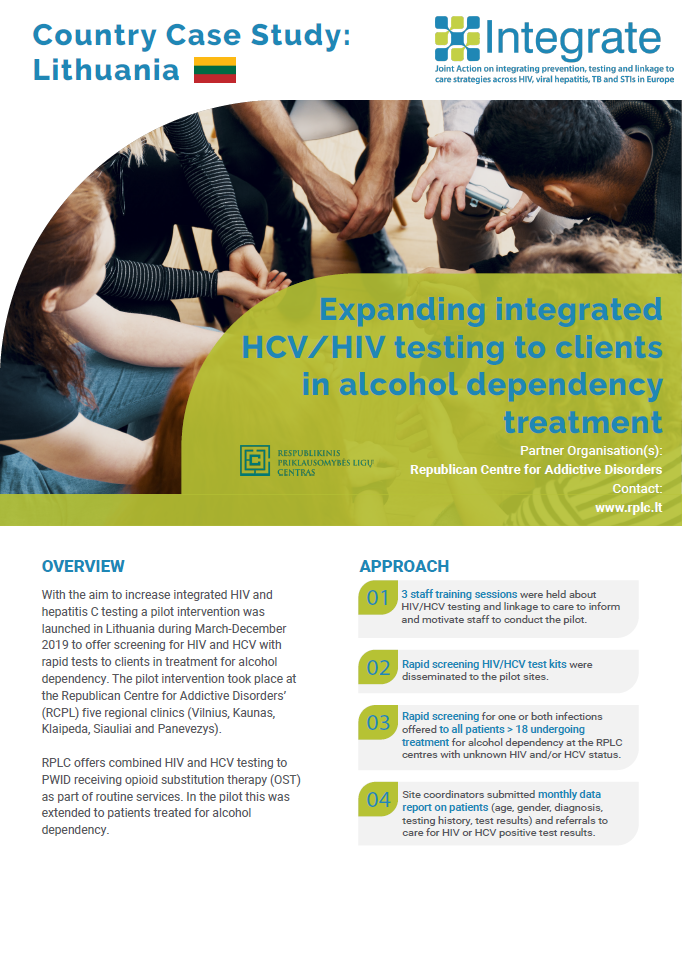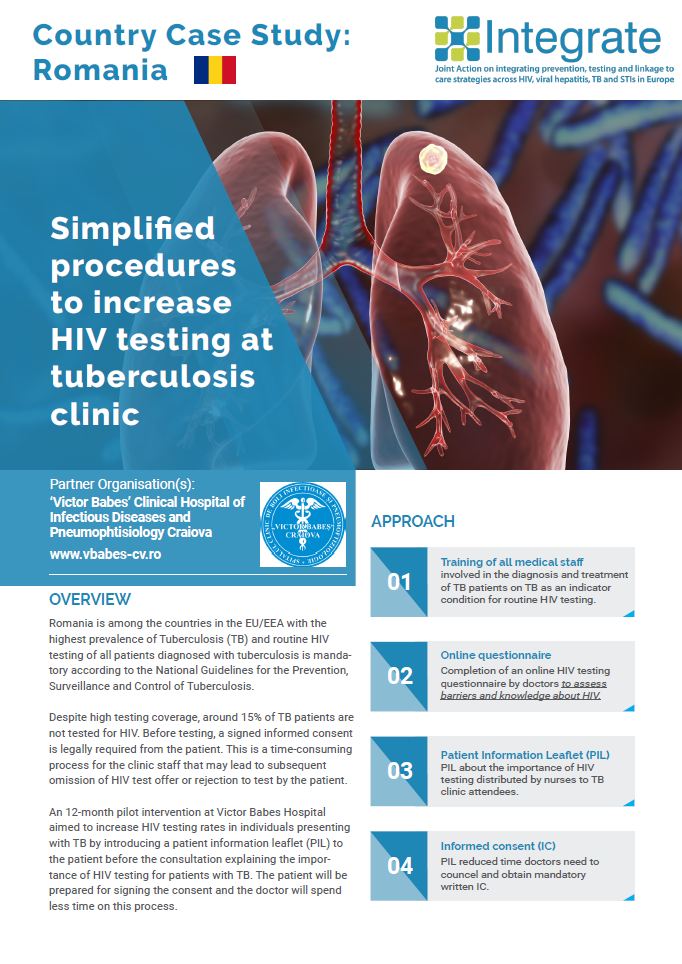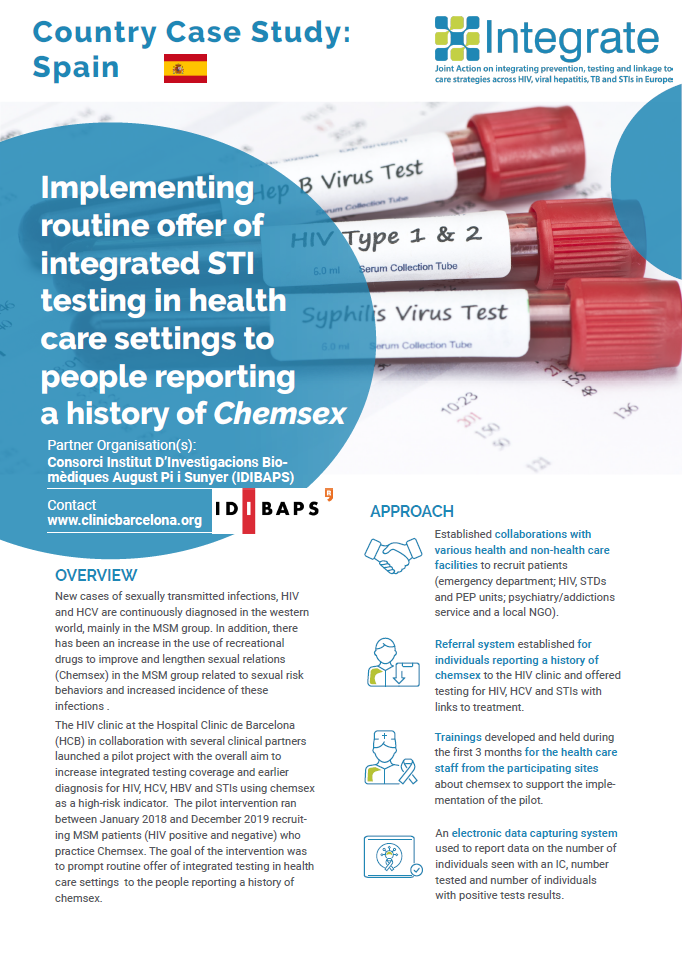Integrated Testing in Health Care Settings
INTEGRATE has adapted tools and materials initially developed for IC-guided HIV testing to support expanded integrated multiple disease testing for viral hepatitis and STIs in health care settings. The new tools and materials have been developed and piloted in health care settings across Europe and are designed to support the implementation of testing for additional diseases. The pilot sites’ experiences have been written up as country cases for your inspiration:

Introducing Indicator Condition guided HIV, HCV and HBV testing in a dermatovenerology clinic
Vilnius University Hospital Santaros Klinikos (VULSK)
Lithuania

Expanding integrated HCV/HIV testing to clients in alcohol dependency treatment
Republican Centre for Addictive Disorders
Lithuania

Simplified procedures to increase HIV testing at tuberculosis clinic
‘Victor Babes’ Clinical Hospital of Infectious Diseases and Pneumophtisiology Craiova
Romania

Consorci Institut D’Investigacions Biomèdiques August Pi i Sunyer (IDIBAPS)
Spain
The new tools and resources developed to support expanded integrated multiple disease testing for viral hepatitis and STIs in health care settings are available here:
Inform and engage staff
New initiatives that add extra tasks and procedures to an already tight schedule may understandably lead to some resistance from already overstretched staff at health care settings. Information about the scientific rational and potential benefits of multiple disease testing may pave the way for staff engagement. Another way forward is to make sure that relevant clinical guidelines include recommendations to test or the relevant diseases. Here are some ideas and resources to kick-start the process:
-
Give a short presentation on integrated testing at your regular staff meeting:
-
Staff presentations from Lithuania: Slide set 1 (in Lithuanian), Slide set 2 (in Lithuanian), Slide set 3 (in Lithuanian)
-
Staff presentation from Romania: Slide set
-
-
Map knowledge and attitudes of staff and feedback the results: Staff questionnaire from Lithuania
-
Audit current testing practices to have a baseline to measure progress against: Audit tool
-
Visualize the initiative with info-sheets to all staff: Lithuanian materials for physicians
-
Review relevant national specialty guidelines and map current recommendations to offer testing: Lithuanian HIV testing protocol
Set up and monitor testing
Adding new procedures such as indicator guided HIV testing, STI or hepatitis testing requires planning and logistics - whom, when and how to tests, communicate results and link to care as well as the financial foundation - must be addressed. Once the testing for additional diseases is up and running regular feedback to staff on any new positives found can keep the momentum and sustain engagement. Here are some ideas and resources to get this in place:
-
Think through the patient pathway in your service: Interactive pathway tool developed for HIV but can be used for any new testing procedure
-
Inform the patients to ease the informed consent procedures: Patient information leaflet Romania
-
Use a simple data tool to generate regular reports that show number of tests conducted and any positives found [data collection tool]
Staff training and further activities
After the staff at your service has embraced the integarted testing initiative there is a risk that it “falls of the table” after some time and test rates decline. To support sustainable continuation of the multiple disease testing regular quality checks and staff training sessions are key keep the motivation high and the implementation on track. Some resources to support this are available here:
-
Apply the easy to use quality improvement tool to develop your routine testing praxis: PDSA tool
-
Encourage staff to sign up for a free 12-module online course on clinical, epidemiological and public health aspect of integarted testing presented by leading European experts Public Health online learning module
-
Attend webinars where testing experts debate new approaches and the latest recommendations from ECDC and others: Watch webinars here
Indicator guided HIV testing
Read more about indicator guided HIV testing here.